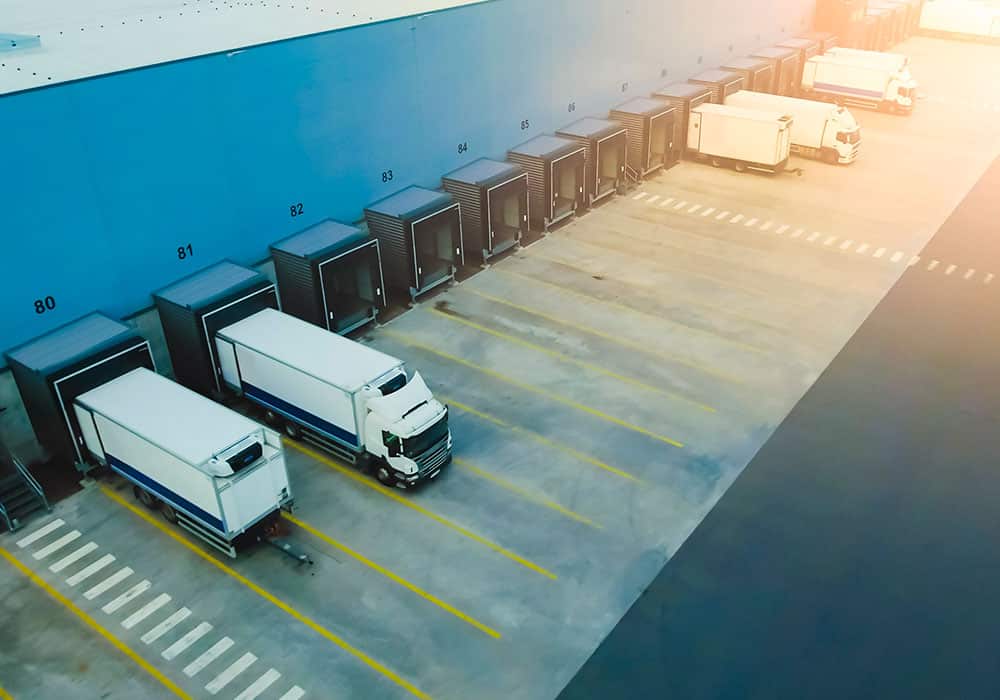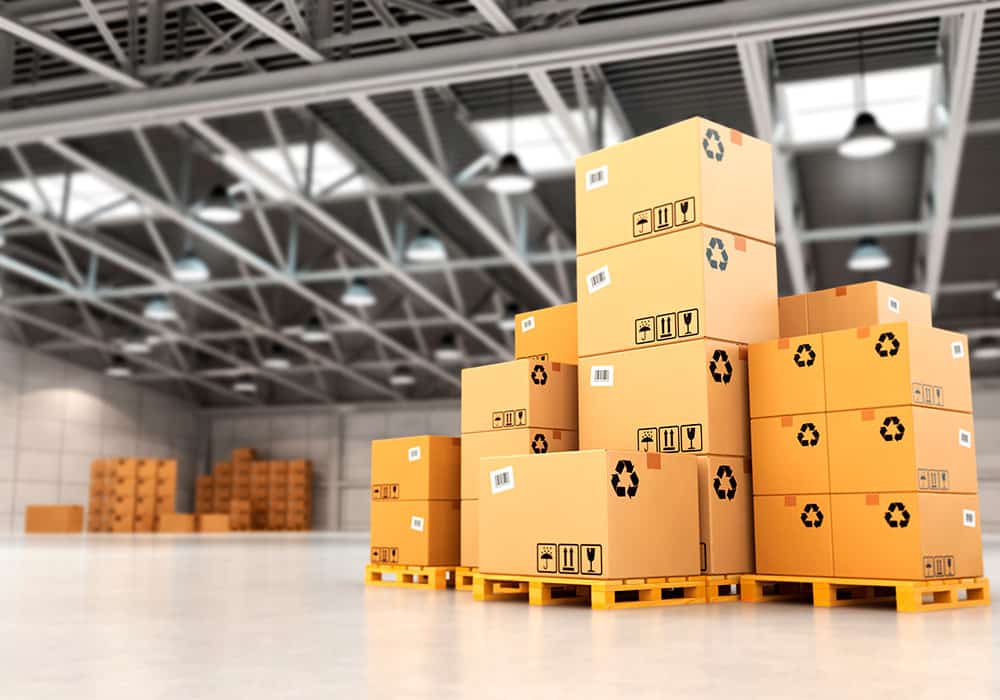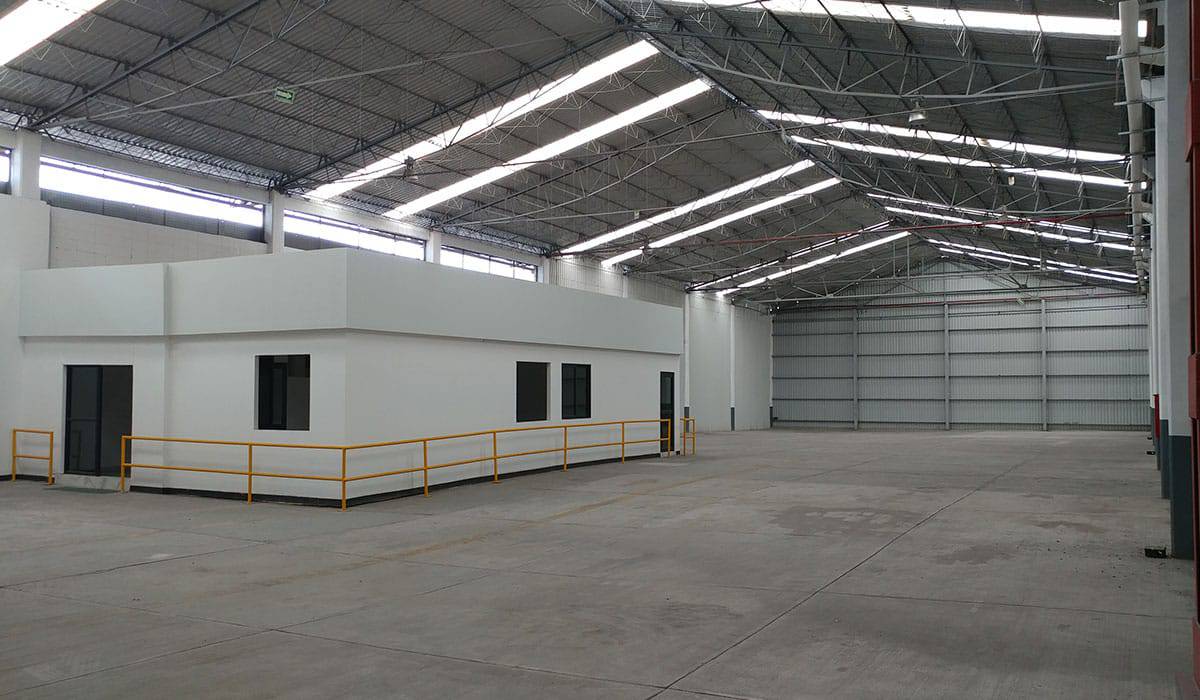With the health emergency caused by Covid-19, businesses around the world are implementing new measures, strategies and offerings amid a growing demand transformation.
For some sectors, the contingency has become an economic challenge, given the decrease in sales, but for others it represents an unprecedented expectation. One of them is ecommerce.
Ecommerce, electronic commerce or online commerce is the way to buy and sell products or services through the Internet, in a more efficient, convenient and secure way, unlike traditional commerce (1).
This modality was already betting on new markets, strategies and products; however, as a result of the coronavirus emergency, delivery services and online platforms have shown upturns at this time (2).
Currently, the strongest reasons for online shopping are divided into “not wanting to leave home” (55%) and “avoiding crowds in the physical store” (48%) (3).
▬
Therefore, it is essential that, if your business deals with the reception of products, equipment or materials, you manage a space to manage and continue the supply process, taking into account the recommendations and the general outlook of the sector.

– Warehousing: ecommerce, warehousing and last mile
– Wineries: ecommerce recommendations in the wake of the pandemic
– Warehouses: suggestions for post-pandemic storage
– Wineries: post-pandemic trends of the last mile
– Wineries: built to suit trends in the wake of the pandemic
Wineries: ecommerce, warehousing and last mile
The warehouses have four specific functions: storage, custody, control and supply of materials and products (4). Based on this, any company in any sector requires specific spaces to carry out these tasks.
Currently, with the demand for ecommerce, the industries that have the most presence in online commerce are those working in the categories of electronics and video games, fashion, home and furniture, travel, and food and beverages (3).
Currently, the strongest reasons for online shopping are divided into “not wanting to leave home” (55%) and “avoiding crowds in the physical store” (48%) (3).
▬
In addition, the industries that will see the greatest growth following the impact of the coronavirus are: packaged and fresh food, home care, pet care, toys and games, hygiene products, alcoholic beverages and electronic products (3), which are already being offered online.
If you work in one of these sectors, it is essential that you implement digital strategies with the help of a digital marketing agency.
digital marketing agency
so that your business does not stop growing in these variable times of economic acceleration.
If you are interested in getting a commercial property, we recommend you to read:
“Rent of commercial premises in CDMX: costs and benefits”.
Wineries: recommendations for ecommerce after the pandemic
The Mexican Association of Online Sales (AMVO) presented a guide of recommendations focused on e-commerce companies in Mexico, to give continuity to this sector after the contingency. The guide is divided into three points: employees, business and customers (5).
With respect to employees:
- Effectively communicate sanitary recommendations produced at the state, federal and international levels to the entire work team, especially to those who make deliveries.
- Avoid “hand to hand” delivery, to reduce the possibility of contagion or spread of the same, at the moment of contacting the final consumer.
- Reallocate schedules and encourage remote work to avoid concentration of personnel at work sites or storage warehouses.
- Use the technology of online platforms to coordinate communication and establish secure work dynamics.
E-commerce has grown 500% in some areas, such as supermarkets and pharmacies. In addition, ecommerce will grow 60% annually after the contingency (6).
▬
For the business:
- Design a renovation or updating plan to facilitate the positioning of the business in the sector after the contingency.
- Detect new needs, consumption habits, platforms and supports that are in demand after the passing of the emergency.
- Specify the type of product most in demand, especially if it is a staple, or evaluate its inclusion within the catalog offered. Update inventories and prices, as well as maintain contact with various suppliers to continuously supply your warehouse.
- Note that delivery addresses will have to be updated to avoid making failed deliveries, which represent a loss.
- Maintain communication with delivery logistics providers to know the scope of their service, and notify users in a clear manner. In some cases, if you have your own personnel to make the deliveries, it could be a suitable alternative, employing and training collaborators in this task.
- Updating sales channels, especially digital.
- Define peak sales days to estimate inventory duration.
- Take into account replenishment times.
- Promote digital payments, to reduce cash handling. Consider the channels and options available to offer secure alternatives to your customers: payment by credit card, debit card, transfers, QR code, among others.
- Constantly disinfect and sanitize the warehouse, respecting the recommended cleaning and hygiene measures, in addition to evaluating the safety of the packaging used.
With customers:
- It is very important to communicate effectively and clearly why it is safe to receive a package, as well as the sanitary protocols that must be complied with in the delivery of products, favoring minimum contact by means of specific rules between end consumers and deliverers.
- Be accurate with the actual level of the operation.
- Keep the customer informed about the status of his order at all times, through the platforms available for such communication.
- Be clear with the inventory at the time of the order.
- Implement a live chat for customer service, so that there is remote, efficient and real-time communication between both parties.
If you are interested in learning more about industrial warehouses, we suggest you read:
“Industrial warehouses: characteristics, areas and recommendations”.

Warehouses: Suggestions for Post-Pandemic Storage
In principle, it is essential to rethink or consider, if it is the first time, the best type of storage for the distribution of your merchandise or product. The types of cellars can be divided as follows (7):
Depending on the material.
- Raw materials.
- Semi-finished products.
- Finished products.
- Spare parts.
- Auxiliary materials.
According to their function in the distribution chain.
- Central. It is located near the factory, contains the main stock and from there the rest of the warehouses are supplied by zones.
- Regional. It is close to the point of consumption and from there it is distributed to both retailers and wholesalers.
- Platform. They carry less stock, but focus more on fast and efficient customer service.
- Temporary or deposit. They are engaged for short periods and do not handle return tasks.
According to their legal regime.
- Own wineries.
- Warehouses for rent.
Keep in mind that the general characteristics of the warehouses will allow you to implement correct actions after the pandemic, in terms of ventilated accesses, distribution routes with sanitary protocols and facilities adapted to your needs.
Having a special and optimized place for the storage and safeguarding of goods and work equipment is essential for your business.
▬
You must have secure spaces to classify and expedite the reception and exit of products, the surveillance of products and the execution of security measures with your equipment, unlike other spaces where it would be difficult to carry out a specific control.
Therefore, if you do not have a distribution center so far, it is important that you rethink the need to have one, or more, to improve the route of transfer of your product in an efficient and safe way, extending the reach of your business.
It is also relevant to take into account the suggested measures to be followed for the full reestablishment of economic activities after the contingency (8):
- Provide more secure warehouses and more efficient routes for delivery.
- Have alternative spaces to extend warehouse coverage and back up merchandise inventory, if necessary.
- Consider the progressive opening of roads and borders, in addition to the possible delay in customs or the lack of general personnel for some phases of distribution, which may impact your delivery times.
- Establish up-to-date communication tools to monitor goods at all times during their entry, exit and transit phases.
- Take more care of perishable products, in case demand is fluctuating.
- Maintain communication with customers to verify receipt and correct delivery of products, through advanced tracking.
- Be aware of the updated rates, dynamics and rules for the distribution of goods in land, sea, air and rail transportation. It is important to have different routes as an option to expedite deliveries.
If you are looking for offices for rent, we invite you to read on:
“Offices for rent in CDMX: zones and recommendations”.
These points will allow you to constantly monitor five fundamental aspects: identify delays, locate the merchandise, analyze the route, identify the equipment and make the necessary adjustments. In Vallejo Properties we advise you at all times, not only to find a suitable space, but also to optimize it with the necessary measures. Get in touch with us.
Consider that, for now, there will not be a stable scheme and it could be changing, according to official dispositions, so your business will have to be flexible in this regard (9), especially regarding return policies, considering the general emergency (10).
In addition, within the warehouse, it is very important to implement permanent sanitization processes focused on surfaces, objects, spaces and vehicles, without neglecting hygiene measures for operators, who must have a gel kit, cloths and masks, as well as general protective equipment.
Of course, it is essential to be attentive to any symptom among the employees in the plant and the delivery personnel in order to proceed with the respective care. In addition, the use of jewelry should be avoided, hands should be washed frequently, a healthy distance should be maintained, the face should not be touched and when sneezing, the inner corner of the arm should be used (10).
If you want to know the new trends in office rentals, we suggest you read:
“Office leasing: a guide to trends and recommendations for the new normal.”

Wineries: Post-Pandemic Trends of the Last Mile
One of the most critical phases of product movement is the last mile. This is known as “capillary distribution” because it focuses on the last leg, where several packages are assembled to be delivered directly to the customer (11).
This point brings together the detailed aspects of the delivery: it should be done as soon as possible, but be in tune with the costs of personnel and transport (11). It is therefore very important to take into account the keys to optimize the transportation of goods to the end customer: routes, type of transport, packaging and compliance with delivery conditions (11).
As online commerce has multiplied 2.5 times during the quarantine, there are proposals emerging to revamp the last mile (12).
▬
On the one hand, the fact that once the “new normal” is installed, the traffic in the city will return and the dispersion of clients to locate them in their homes, since they will now be continuously moving to other spaces and will no longer be so easy to locate (12).
Therefore, a trend that is gaining momentum is the grouping of deliveries, where the distribution of several packages is managed during a week for the same customer. This way, all your orders are gathered and we wait for your indication to know the day and location where you prefer to receive them.
This would also imply a change in the logic of express deliveries, which will depend on consumers and their relationship with ecommerce in general, to become premium customers and receive such benefits (12). In addition to this trend, there are four other globally recognized trends that are gaining relevance in the aftermath of the pandemic (13):
- Deliveries with autonomous robots. This is intended to replace the interaction between customers and delivery drivers, in order to provide greater confidence when delivering packages. Of course, this policy poses significant costs for the industry in terms of hardware and regulatory issues that will have to be addressed in the coming months.
- Free same day delivery. This policy has been in high demand due to the high expectation for all types of deliveries, especially urgent ones. In some ways, this requirement will be retained and will be a competing policy with the large e-commerce companies.
- Ecological fleets. It will be important to commit to the use of electric and autonomous vehicles, in addition to the use of bicycles for micromobility between warehouses and delivery areas, as long as these are close by. Therefore, you must have a good (at least central) location for the distribution warehouse.
- Micro-storage. This type of warehouses will be in great demand, in small and large businesses, in order to distribute goods in different areas. At Vallejo Properties we have several complexes and locations in the industrial zones of Vallejo and Tultitlán to install your distribution centers.
Online sales and last-mile distribution
will take off following the advance of the “new normal”.
▬
That is why it is important to have options that strengthen your business and the distribution of your products. Contact us and we will help you find the best and we will help you find the best space for your business.
If you want to know more about real estate in the CDMX, see our text:
“Inmobiliarias en CDMX: guía de tendencias, empresas y recomendaciones tras la pandemia”.
Wineries: built to suit trends after the pandemic
Built To Suit (BTS) construction, which has custom construction at its core, is an option that allows for efficient, cost-effective and accurate investment to build projects that suit your needs (14).
At Vallejo Properties we have this option for the specific design of the warehouse you need: whether for general storage, industrial or any type of manufacturing, where we take into account the necessary productivity and sanitation measures.
Therefore, BTS construction is essential because it allows you to comply, from the planning of the site, with the requirements of general and specific sanitary protection of the industrial sector or the commercial line of business that your business has.
Another important point is the social distancing, so that the warehouse cannot be 100% occupied, substituting some tasks with machinery or equipped technology, in addition to the improvement of optimal climatic conditions for the ventilation of the place and spaces (14).
If you are looking for an industrial building, we recommend you to read:
“Industrial building: guide with everything you need to know”.

Wineries: post-pandemic projections
It is essential to locate the main changes in the sector as a result of the contingency in order to implement new commercial routes in your business.
As for physical shopping patterns, many of the new ecommerce consumers are actually here to stay, as they will prefer these forms to traditional ones (such as going to a shopping mall).
The home shopping boom will not end and there will be more demand for industrial spaces, such as storage warehouses, that bring products and businesses closer to consumers (15).
▬
Therefore, it is very important to take advantage of the transition moment to find suitable spaces, which, although it implies making visits -with sanitary protocol- to the site, it will be an unprecedented investment for your business.
These types of aspects should consider sanitary regulations and the inclusion of remote work as a change of commercial and industrial habit, in addition to the adoption of digital measures to be present in the Internet salesand customer service in electronic media and direct messaging (15).
Conclusions
No doubt about it, this time is an invaluable opportunity to boost electronic and distributive commerce, as it will not only be important to take into account the sector’s outlook, but also the importance of its role. in Mexican society as a facilitator of goods and services in the midst of the return to the ‘new normal’.
In this way it is important to review the distribution strategy, the storage site as the final point of contact with the consumer, and the commercial and strategic route of your business. In Vallejo Properties you can count on us to find the ideal space and relaunch your business in this time of change. Contact us and we will support you in the journey towards your commercial acceleration.
References
- Rain. E commerce: what is it, how does it work and where to start?. Rain, 2020. Accessed June 15, 2020.
- MX logistics. E-commerce grows despite coronavirus: AMVO. Logistics MX, 2020. Accessed June 15, 2020.
- AMVO. Report 2.0 Impact of Covid-19 on online sales in Mexico. Mexican Association of Online Sales (AMVO), 2020. Accessed June 15, 2020.
- Logycom. 5 points to know if you need to rent a warehouse. Logycom, s / f. Accessed June 15, 2020.
- AMVO. Coronavirus: impact for e-commerce and advice for companies. Mexican Association of Online Sales (AMVO), 2020. Accessed June 15, 2020.
- Azucena Vasquez. Covid-19 benefits logistics employment. Reform, 2020. Accessed June 15, 2020.
- Logycom. Types of storage of goods. Logycom, n.d. Accessed June 15, 2020.
- Logycom. Impact of Covid-19 on warehousing and distribution of goods. Logycom, s / f. Accessed June 15, 2020.
- Logycom. Picking and warehousing cost. Logycom, n.d. Accessed June 15, 2020.
- Veronica Hernandez.
How to protect last mile operators from COVID-19.
Transportes y Turismo (T&T) Magazine, 2020. - Larch. The last mile: what it is and why it matters in logistics. Larch, 2019. Accessed June 16, 2020.
- The Economist. Logistics fears last mile collapse. The Economist, 2020. Accessed June 16, 2020.
- MX logistics. 4 trends in last mile logistics post Covid-19. Logistics MX, 2020. Accessed June 16, 2020.
- ACIS. Built to suit: a trend that reinvents construction. ACIS, 2020. Accessed June 16, 2020.
- Free market. How to act today and what to do tomorrow in the real estate industry? Webinar Free Market, Cubic Meters and NocNok, 2020. Accessed June 11, 2020.
